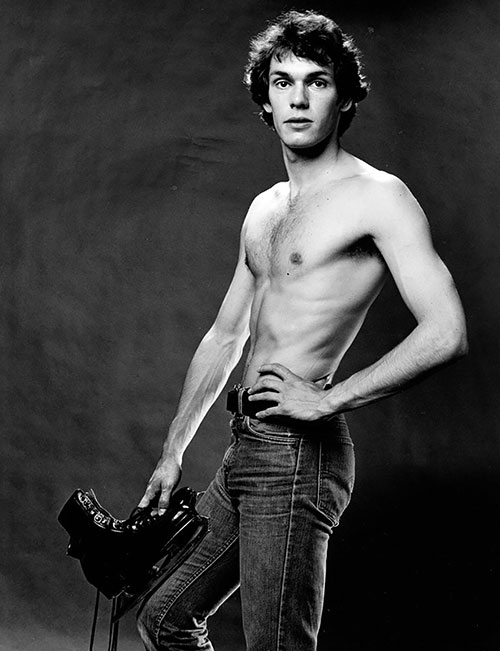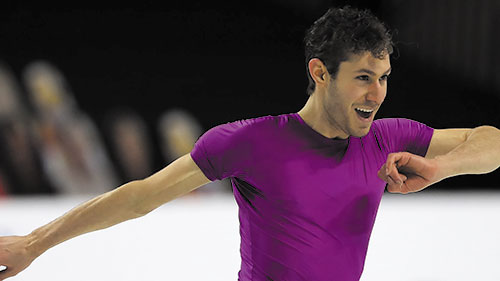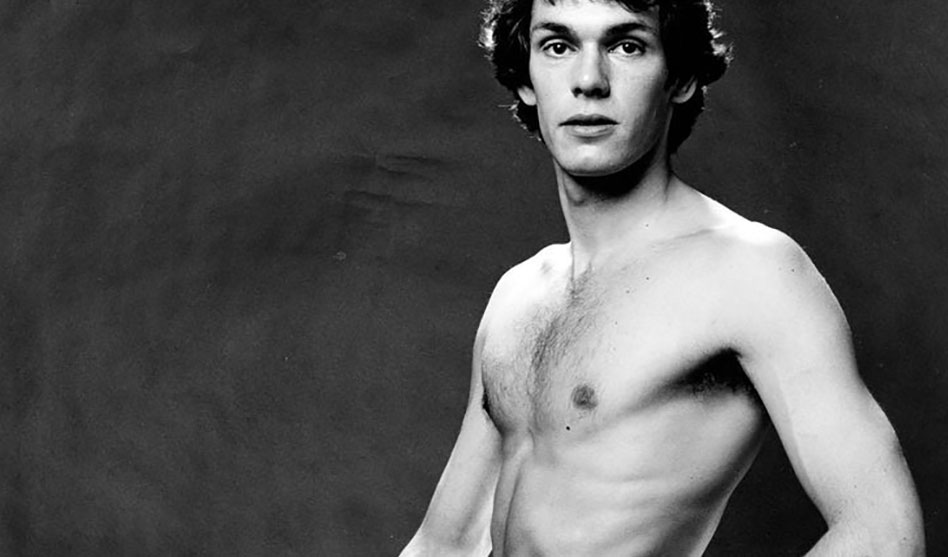John Curry
From Ondrej Nepela in ’72 to Timothy LeDuc and Adam Rippon today, a look at ice skating’s rainbow stars
COY COVINGTON | Contributing Writer
covingtoncoy@gmail.com
There is the perception that the world of figure skating is crowded with gay men. But is that really true?
If you subscribe to the “one in 10 people is gay” theory, then statistically, there would have to be a good many straight men in figure skating. Of course, that statistic works in reverse, so there must also be a proportionate number of gay people in the sport.
In the past, many LGBTQ people in ice skating have felt that coming out would harm their careers, so almost all stayed in the closet until their competitive careers were over. The sport seemed to agree that this perception was a liability to reaching a broader audience.
The figure skating world is indeed a bit staid and stuffy, but doors are being nudged opened. This was especially true during last June’s Pride month. Jason Brown, one of the most beloved skaters on the planet, French singles skater Kevin Aymoz and Canadian ice dancers Kaitlyn Weaver and Paul Poirier all came out as queer — and practically all at once it seemed.
Timothy LeDuc opened up as identifying as non-binary at just about the same time while speaking with Eliot Halverson on Instagram Live with United States Figure Skating. Halverson is a three-time U.S. Figure Skating champion at the intermediate, novice and junior levels and identifies as transgender/non-binary. She is now an internationally recognized coach and choreographer.
Taking a quick look at a few gay trailblazers through the years, one might think first of the stars of the 1970s: names like Ondrej Nepela, (of Czechoslovakia, now Slovakia), who went to his first Olympics at age 13 in 1964 and later won gold at the 1972 games in Sapparo, Japan; John Curry, the 1976 Olympic gold medalist from the United Kingdom who was world renowned for bringing his ballet and dance skills to the ice and who won the Olympic Games in Innsbruck; Canadian Toller Cranston, known as a legendary showman on the ice, who won bronze also at the 1976 games; the U.S.A.’s Randy Gardiner who, along with his pairs partner Tai Babilonia, won World Championship Gold in 1979; Robin Cousins, a hugely popular champion who won Olympic gold in 1980 and has been married to his husband for more than a decade.

John Curry
As time slid on, we had the Battle of the Brians, so named by the media, which put a spotlight on the rivalry between Canadian Brian Orser and American Brian Boitano at the 1988 Winter Olympic Games in Calgary.
This competition is considered one of the most memorable in men’s figure skating history.
Boitano came out on top as the Olympic gold medalist while Orser settled for the silver for a second straight games. Orser is now an imminently sought-after coach and has had tremendous success guiding the careers of some of the finest skaters in the history of the sport. Boitano has continued his ascent as a primetime Emmy winner, author and HGTV, Cooking Channel & Food Network host, and is set to co-produce and choreograph the upcoming Netflix ice skating film Take the Ice.
The trailblazing continued when Rudy Galindo gave the performance of a lifetime and created one of the most unforgettable skates in history at the 1996 U.S. National Championships in San Jose. Galindo was the first openly gay man and Mexican-American to win a gold medal.
American Timothy Goebel won the Olympic bronze medal in Salt Lake City in 2002. Known in the skating community as “the quad king,” he helped kick-start the “quad jump revolution” within men’s skating. He was the first person to land a quadruple salchow in competition and the first person to land three quadruple jumps in one program.
And then there’s Johnny. Johnny Weir is a two-time Olympian, the 2008 World bronze medalist, a two-time Grand Prix Final bronze medalist, the 2001 World Junior Champion, and a three-time U.S. National champion. And he is fabulous.
Known for his flamboyant outfits and outrageous hairstyles, Weir is a fixture on television, including NBC’s coverage of skating — and other — events,which he co-hosts alongside gal pal 1988 Olympic gold medalist Tara Lipinski. Weir did not come out until 2011 when he revealed he was gay in his memoir, Welcome to My World.
In 2018 the door got a good kick when Adam Rippon of the U.S. and Eric Radford of Canada made history at the PyeongChang games when they both won medals in the figure skating team event. They were each the first two publicly out gay men to ever win a medal at the Winter Olympics.
After his competition was over Rippon, well known for his wicked wit and sassy swag, would go on to become the darling of the PyeongChang games, spending the rest of the Olympics working as an NBC correspondent. Later that year he won the Mirror Ball Trophy on Dancing with the Stars, and he continues to be a recognizable figure on television and in the media. Rippon is the co-creator of a figure skating-themed comedy that is in development, according to NBC Entertainment.

Jason Brown
Radford has laced up his skates again and will be back in competition this season with new pairs partner Vanessa James of France.
But where are the women? There may not be many known out female skaters, but the numbers are growing.
In addition to Weaver, there are Rachel Parsons and Karina Manta, both former American competitive ice dancers, and Fumie Suguri of Japan, three-time World medalist, 2003 Grand Prix Final champion and a five-time Japanese national champion.
Amber Glenn of the U.S., training mate with Cain-Gribble and LeDuc, is doing her part to raise awareness.
She came out to the Dallas Voice in 2019 as bisexual/pansexual and made a huge splash at the 2021 U.S. nationals when she snagged an impressive silver medal. Glenn made her 2021 Grand Prix season debut last weekend at Skate America in Las Vegas.
Also out, among a scant few others, and skating competitively this season is French ice dancer Guillaume Cizeron who, with partner Gabriella Papdakis, is the 2018 Olympic silver medalist and a four-time world champion.
The steps may be baby, but visibility is coming. Many local skating clubs and national federations have established Diversity, Equity and Inclusion programs to make the sport more welcoming. LeDuc and Halverson are part of the USFS DEI working group.
We’ve come a long way baby.













We are all richer for our gay brothers